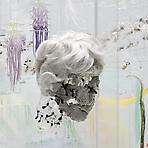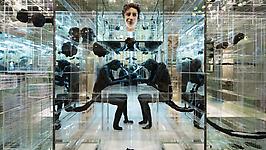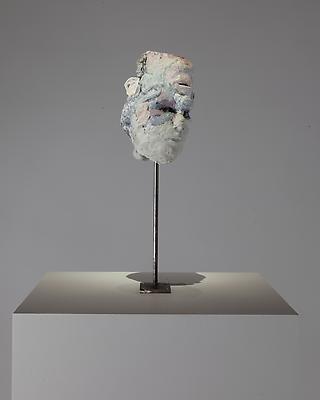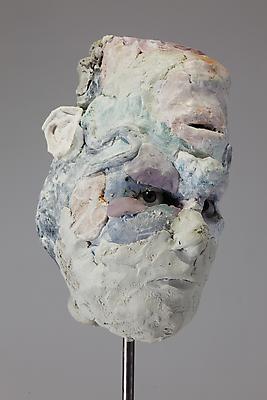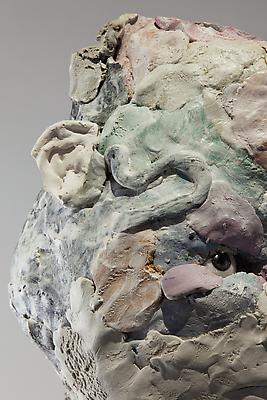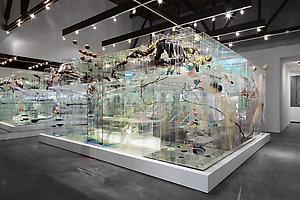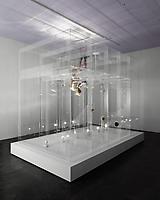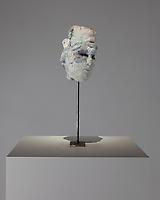David Altmejd
Juices
February 1 – March 8, 2014
Main Gallery
-
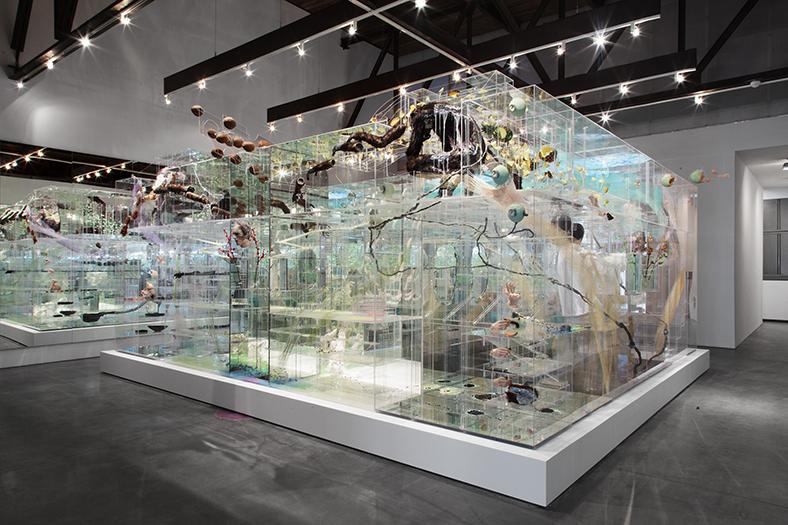
The Flux and The Puddle, 2014
Plexiglas, quartz, polystyrene, expandable foam, epoxy clay, epoxy gel, resin, synthetic hair, clothing, leather shoes, thread, mirror, plaster, acrylic paint, latex paint, metal wire, glass eyes, sequin, ceramic, synthetic flowers, synthetic branches, glue, gold, feathers, steel, coconuts, aqua resin, burlap, lighting system including fluorescent lights, Sharpie ink, wood
129 x 252 x 281 inches (327.7 x 640.1 x 713.7 cm)
ARG# AD2014-001 -
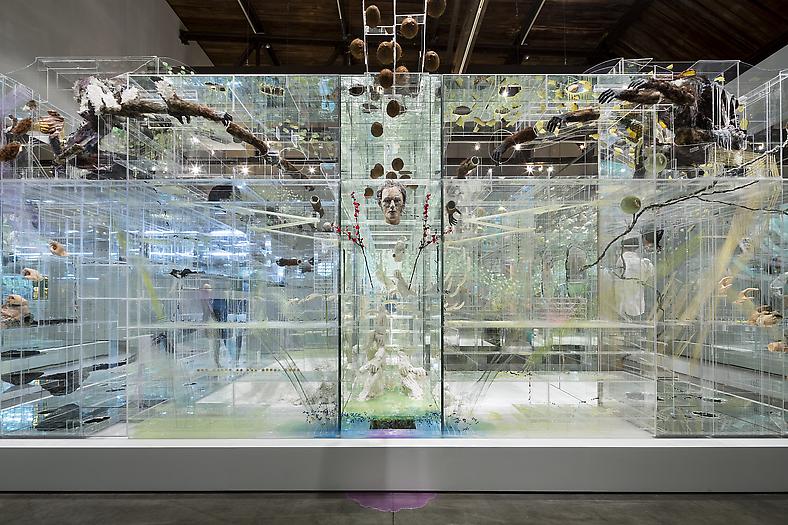
-
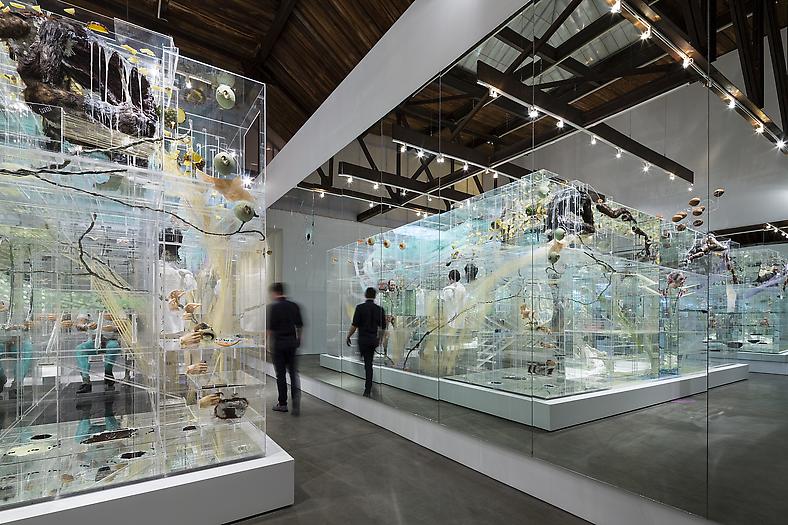
-
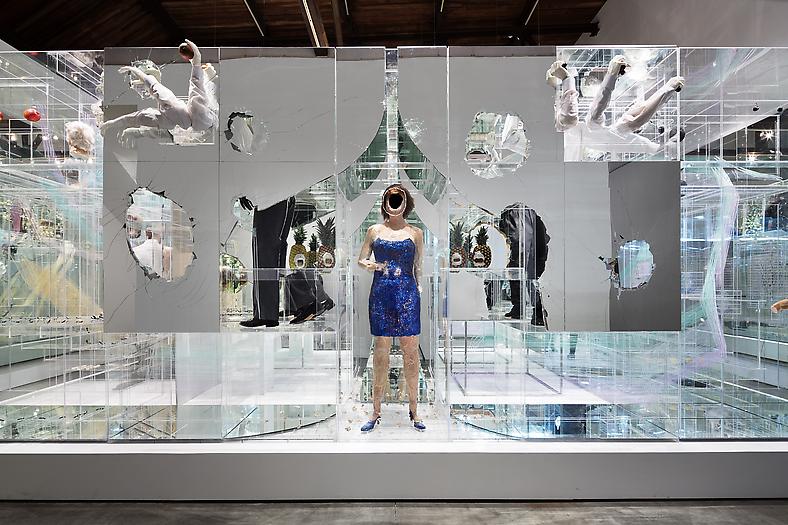
-

-
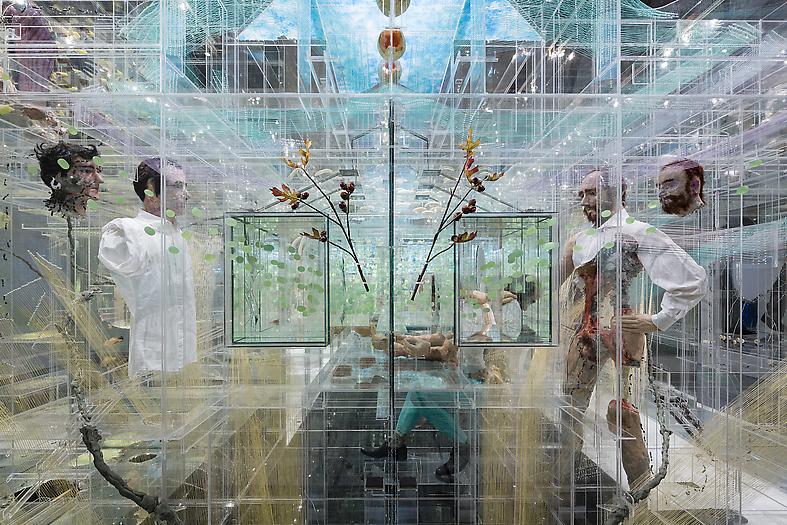
-
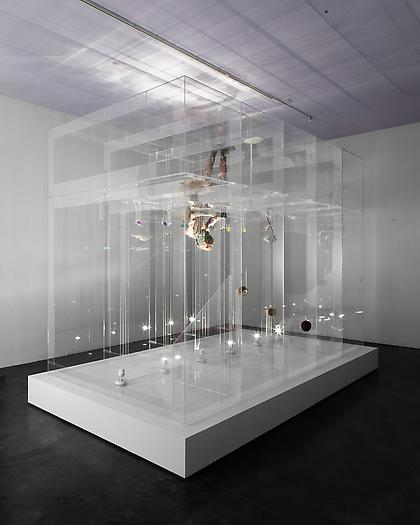
The Eve, 2014
Plexiglas, polystyrene, expandable foam, quartz, epoxy clay, epoxy gel, synthetic hair, glass eye, resin, coconuts, steel, sesame seeds, synthetic flower, synthetic branch, flock, metal wire, lighting system including fluorescent lights, thread
119 x 96 x 157 inches (302.3 x 243.8 x 398.8 cm)
ARG# AD2014-002 -

Untitled, 2014
polystyrene, expandable foam, epoxy clay, epoxy gel, acrylic paint, glass eyes, plaster
11 x 6 x 8 inches (27.9 x 15.2 x 20.3 cm)
ARG# AD2014-003
On the heels of his new, encyclopedic monograph published by Damiani and a forthcoming survey exhibition at the Museé d’Art Moderne de la Ville de Paris, we are proud to present David Altmejd’s fourth solo exhibition at the gallery.
Altmejd’s language unfolds over three exhibition spaces, creating distinct environments that shift perceptions of matter and time, surface and structure, interior and exterior. The progression starts with The Flux and The Puddle, a deeply layered slice of a universe that fills the first room of the gallery. Altmejd’s ability to hold seemingly infinite layers of information manifests itself in a transparent, mirrored and multilevel structure that houses all of the varied bodies of work in his extensive practice: werewolves, plaster figures, bird men, heads, smashed mirrored panels, and explosions of resin fruit. With its complexity and depth, the work demands a physical experience.
One action of the artist’s hand informs the next so that the work builds itself, yielding unexpected breakthroughs. Thousands upon thousands of intuitive decisions cumulate in a network of meaning. In The Flux and The Puddle, channels and staircases of pouring and pooling liquids intertwine among figures forming a circular progression between human and nonhuman, abstraction and representation. These animated arrangements are simultaneously frozen streams of expansion, isolation and disorientation.
Altmejd’s work often draws a corollary between the body and architecture with architectural landscape punctuated by figurative elements or figurative sculptures blown up to gigantic scale or infected with inorganic material. In the work in the second gallery, The Eve, a solitary, seated figure is inverted and suspended in space. The sculpture emphasizes the process of addition and subtraction; each detail is imperative. There is an intentionality in every line, scratch and hole. Combining three of Altmejd’s well known bodies of work: the architectural Plexiglas environments, the growing/organic body of werewolves and giants, and the suspended clay figures, the work is simultaneously radical and beautiful. In the third gallery the viewer is led to a human sized head. This head becomes a focal point of Altmejd’s language; a macrocosm condensed into a jewel-like microcosm.
Altmejd’s practice mines the space that separates the inside from the outside. Architecture becomes as much about permeability as structure. Seemingly disparate worlds, the nervous system and webs of energy or the mythological transformation of werewolves and the biological growth of fruit into plants are bound together. Using base material--thread, mirror, plaster, resin, sequins, artificial hair and ceramics--Altmejd’s work is an expression of the visceral power of sculptural objects.
David Altmejd was born in Montreal, Quebec in 1974 and received his MFA from Columbia University in New York. Altmejd is currently preparing for forthcoming exhibitions at the Art Gallery of Ontario, Toronto, Canada, from February 22 - October 4, and a major survey exhibition at the Musée d’Art moderne de la Ville de Paris (MAM/ARC) in October 2014. Most recently, Altmejd was recognized with a solo exhibition at the Brant Foundation Art Study Center in Greenwich, Connecticut (2011-2012). In 2007, the Fundació La Caixa Museum in Barcelona, Spain, presented a show of the artist’s work curated by Sílvia Sauquet. That same year, Altmejd was commissioned by Louise Déry to represent the Canadian Pavilion at the 52nd Venice Biennale, which was accompanied by a catalogue. He has also participated in the 2004 Whitney Biennial, curated by Chrissie Iles, Shamim M. Momin and Debra Singer, and the 8th Istanbul Biennial, curated by Dan Cameron in 2003. The artist’s work has been exhibited worldwide, and is in the permanent collections of numerous institutions, including the Solomon R. Guggenheim Museum, the Whitney Museum of American Art, the Museum of Contemporary Art Los Angeles, Galerie de L’UQAM, Les Abattoirs, Museé d’Art Contemporain de Montreal, and Museé d’Art Moderne Grand-Duc Jean, Luxembourg. The artist lives and works in New York.
For media inquiries contact:
Lance Brewer at l.brewer@rosengallery.com or Jen Joy at jen@suttonpr.com
David Altmejd
David Altmejd is known for his intricate and highly worked room-size installations and sculptures. Seamlessly moving between a variety of aesthetic modes – from an almost ascetic minimalism in works employing plaster and mirror to works teeming with accumulations of crystals, gold chain, thread, taxidermied birds and animals, among other objects -- Altmejd’s work offers beautifully wrought meditations on the cycles of life and death, interiority and exteriority, sexuality, and spirituality. In the most comprehensive consideration of the artist’s work to date, the volume includes four essays by a range of writers, who by providing different entry points to Altmejd’s art, animate and engage the rich and diverse ideas that characterize his important practice.
The full range of Altmejd’s nearly 20 years of work is featured in the book, from his earliest work--where the vast aesthetic vocabulary he has evolved over the years took shape--to his most recent series. Organized roughly chronologically, with an extensive art historical essay by Robert Hobbs as well as pithy contributions from the other esteemed writers forming the connective tissue between expansive sections of color plates, one can trace the many through-lines that the artist has developed and reworked during his career. The book affords a close and intimate view of the inspired and wholly unique work that brought him to prominence in the early 2000s, while also providing a sense of the breadth and scope of his polymath-like creativity and inventiveness in work less well-known or chronicled.
Edited by Isabel Venero
Format: Hardcover
9.5 x 11.75 inches / 384 pages
Language: English
Publisher: Damiani
2014
CONTRIBUTORS
Trinie Dalton is a writer of fiction and short stories, as well as being an accomplished art writer. Wide Eyed (Akashic), Sweet Tomb (Madras Press), and A Unicorn Is Born (Abrams) are works of fiction. Dear New Girl or Whatever Your Name Is (McSweeney’s) and Mythtym (Picturebox) are compilations of art writing. She has written articles for venues such as Bookforum, Paper, Purple, Arthur, The Believer, and Bomb. She teaches book/arts and writing at Pratt and NYU, and is on the MFA Fiction faculty at Vermont College of Fine Arts.
Christopher Glazek is a writer living in Los Angeles and the founder of the Yale AIDS Memorial Project. His essays focus on a range of social and cultural issues. Recent work has attended to complex problems such as the incarceration crisis, HIV/AIDS, credentialism, and student debt, in addition to critical writing devoted to art, film, literature, and music. His work has appeared in Artforum, the literary journal N+1, New York Magazine, The London Review of Books, and NewYorker.com, among other publications.
Robert Hobbs is an art historian at Virginia Commonwealth University, where he has held Rhoda Thalhimer Endowed Chair since 1991. He has also been a visiting professor at Yale University since 2004. Recognized as a scholar, teacher, and curator, Hobbs specializes in both late modern and post-modern art. He has published widely and has curated dozens of exhibitions at important institutions in the U.S. and abroad. His publications include monographs on Milton Avery, Alice Aycock, Edward Hopper, Lee Krasner, Mark Lombardi, Robert Smithson, and Kara Walker, and he has also written on Hernan Bas, Keith Haring, Jonathan Lasker, Mark Lindquist, Malcolm Morley, Neo Rauch, Andres Serrano, Yinka Shonibare, James Siena, Meredyth Sparks, and John Wesley.
Kevin McGarry is a writer, editor, and curator. He writes the contemporary art column “Out There” for T: The New York Times Style Magazine, is the art editor for V Magazine, and reviews exhibitions for Art Agenda and Artforum.com. He was the editor of the first monograph on Ryan Trecartin (Skira Rizzoli) and contributed to the major monograph on Yayoi Kusama published in 2012 (Rizzoli). He is a co-programmer of Migrating Forms, an annual festival of artists’ film and video at Anthology Film Archives, and in 2013, was the film curator for MoMA PS 1’s “Expo 1.”
David Altmejd
Published by Xavier Hufkens, Brussels, on the occassion of David Altmejd's 2013 exhibtion at the gallery.
ISBN 978-94-91245-05-3
David Altmejd: The Index
2007, 72 p., hardcover
Col. ill., 22 x 28,5 cm
© David Altmejd, Louise Déry and Galerie de l’UQAM
ISBN 978-2-920325-18-0
This publication accompanies the exhibition David Altmejd: The Index, organized by the Galerie de l’UQAM and presented in the Canadian Pavilion at the 2007 Venice Biennale. The catalogue includes an essay by Louise Déry about The Index, and The Giant 2. Its title refers to the principle of collection and of the diversity of species, to their classification, their organization into a dynamic avifauna, where an internal equilibrium ensures the perpetuity of the system, which somehow suggests a symbolic architectural modelling of life. This publication won an award in the 2008 Grafika competition.
Français / English / Italiano
David Altmejd
2006, 112 p., hardcover
Col. ill., 21,5 x 27 cm
© David Altmejd, Louise Déry and Galerie de l’UQAM
ISBN 2-920325-95-7
ISBN 978-2-920325-95-1
This publication is the first monograph dedicated to David Altmejd. It provides extensive visual documentation, particularly on the work The University 2, exhibited at Andrea Rosen Gallery in 2004 and acquired by the Guggenheim Museum in New York. The essay by Louise Déry surveys ten years of work and examines the major aspects of the artist’s research and of his oeuvre. This book was published to coincide with the travelling exhibition David Altmejd, organized by the Galerie de l’UQAM in 2007 and presented in Montreal (Galerie de l’UQAM), Oakville (Oakville Galleries) and Calgary (Illingworth Kerr Gallery, Alberta College of Art + Design).
Français / English
Untitled
2014
polystyrene, expandable foam, epoxy clay, epoxy gel, acrylic paint, glass eyes, plaster
11 x 6 x 8 inches
(27.9 x 15.2 x 20.3 cm)
ARG# AD2014-003
The Flux and The Puddle
2014
Plexiglas, quartz, polystyrene, expandable foam, epoxy clay, epoxy gel, resin, synthetic hair, clothing, leather shoes, thread, mirror, plaster, acrylic paint, latex paint, metal wire, glass eyes, sequin, ceramic, synthetic flowers, synthetic branches, glue, gold, feathers, steel, coconuts, aqua resin, burlap, lighting system including fluorescent lights, Sharpie ink, wood
129 x 252 x 281 inches
(327.7 x 640.1 x 713.7 cm)
ARG# AD2014-001
The Eve
2014
Plexiglas, polystyrene, expandable foam, quartz, epoxy clay, epoxy gel, synthetic hair, glass eye, resin, coconuts, steel, sesame seeds, synthetic flower, synthetic branch, flock, metal wire, lighting system including fluorescent lights, thread
119 x 96 x 157 inches (302.3 x 243.8 x 398.8 cm)
ARG# AD2014-002
Untitled
2014
polystyrene, expandable foam, epoxy clay, epoxy gel, acrylic paint, glass eyes, plaster
11 x 6 x 8 inches
(27.9 x 15.2 x 20.3 cm)
ARG# AD2014-003
